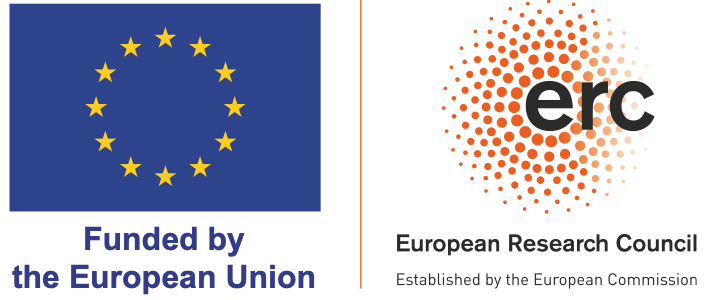Methodology
The CRAFTWORK project has a multi-methodological nature. Within a comprehensively qualitative research design, the project experiments the combination of digital methods and field-based qualitative research, made of interviews, participant observation and ethnography. This is reflected in 4 Work Packages – three of which entailing the collection, analysis and interpretation of various sources of primary research data, accompanied by a final set of activities pointed at developing a theoretical synthesis.
Mapping ‘neo-craft work’
Work package 1 (January 2021 – July 2022)
Q1. Who are the main actors in the emergent context of ‘neo-craft’ work? Where are they located? How does ‘neo-craft’ work locate across the urban/rural divide?
WP1 consists in the mapping of ‘neo-craft’ work. This responds to the difficulty of accurately pinning down relevant data, subjects, locations and other information about a phenomenon that does not yet have a clear identification both theoretically and empirically at both national and EU level. It is articulated in two main phases. The first one consists in the mapping of European craft cultures and the development of extensive phase of literature review, that is instrumental to the foundational theoretical framing of the project, which has resulted in the publication of the following article: Gandini, A., & Gerosa, A. (2023). What is ‘neo-craft’work, and why it matters. Organization Studies, 0170840623121396.
In a second phase, based on the assumption – as outlined in existing research – that social media constitute an important milieu within which to encounter examples of ‘neo-craft’ work, digital methods are employed to identify significant actors, networks and locations of ‘neo-craft’ work across the EU area. Rigorously following existing GDPR regulations and ethical principles for digital research, data about ‘neo-craft’ work and workers is harvested as found on 5 digital platforms: YouTube, Instagram, Facebook, Twitter, and TikTok, through a combination of ad hoc, custom-built web scraping and the use of ready-made software for API interrogation, starting from the keywords “artisanal” and “artisan”. Organised, sampled and analysed by way of ethnographic content analysis, this data ius instrumental to the construction of of a pan-European directory of ‘neo-craft’ enterprises, actors and networks.
‘Neo-craft’ work: identity, lived experiences and social status
Work package 2 (July 2022 – July 2024)
Q2. What are the individual and collective lived experiences of work by ‘neo-craft’ workers?
Q3. What is the class and educational background of ‘neo-craft’ workers? What are the trajectories and pathways that bring workers to ‘neo-craft’ work? Is the choice of engaging in ‘neo-craft’ work the reflection of a search for meaningfulness in work, in times of economic volatility?
Q4. How are ‘neo-craft’ work identities constructed? What is the relationship between ‘neo-craft’ work, identity and issues of gender, race and ethnicity? What is the relationship between ‘neo-craft’ work, identity and social status? To what extent do ‘neo-craft’ workers share a collective perception of class location?
Q5. Is there any difference in the lived experiences of work and in the cultural conceptions of social status by ‘neo-craft’ workers in urban contexts, vis-a-vis those located in peripheral/non-urban/provincial/rural areas?
Q6. How does ‘neo-craft’ work relate to technological advancement in work, particularly in relation to innovation, automation, autonomy and control?
WP2 has the objective of accounting for the lived experiences of work by ‘neo-craft’ workers. Based on the mapping produced in WP1, 20 relevant cases of ‘neo-craft’ work will be selected. Each case will be made object of intensive fieldwork for a period of around 2-3 months, following the approach of a ‘multi-sited ethnography’ (Falzon, 2016). This will entail ethnpgraphic research and a set of interviews with founders, workers and other key informants, as well as, whenever possible, participant observation within the spaces inhabited by workers. This phase of the research is specifically peculiarly at understanding the relationship between work, identity and social status in the context of ‘neo-craft’ work. Case selection is conducted according to the following criteria: a) representation of various EU geographical areas; b) representation of a variety of productive sectors and activities; c) representation of both urban and non-urban/provincial/peripheral/rural areas to account for an understanding of the urban-rural divide in the ‘neo-craft’ context.
Social media and ‘neo-craft’ work: imaginaries, cultures, practices
Work package 3 (August 2024 – January 2025)
Q7. What are the main features of the cultural imaginary that underpins ‘neo-craft’ work? What is the role of digital technologies in fostering an imaginary of ‘neo-craft’ work as meaningful work?
Q8. How do ‘neo-craft’ workers perform their identity on social media? For what ends and purposes?
In WP3, digital methods is applied again, this time in combination with visual analysis (Rose, 2016) and text analysis (Stemler, 2015), for the study of the imaginaries and cultures that underpin ‘neo-craft’ work as well as of the practices of professional and personal self-presentation by ‘neo-craft’ workers. Activity on social media by the 20 cases observed is followed closely for a period of 3 months, together with activity by other subjects, actors and network arising as relevant from WP2. The visual and text analysis of the digital content collected in this phase gives ample rendition of the cultural imaginary of ‘neo-craft’ work, as well as of the uses of social media by actors in this scene for self-presentation purposes.
Theoretical modelling
Work package 4 (February 2025 – December 2025)
Q9: How can we define the relationship between identity and work in ‘neo-craft’ work? What are the cultural logics underpinning the relationship between identity and ‘neo-craft’ work?
Q10. What interpretative categories can be used to develop a grounded and sophisticated framework for the understanding of the relationship between identity and work in the context of innovative forms of work, building on the example of ‘neo-craft’ work?
WP4 consists in a theoretical synthesis phase, aimed at devising the new framework for the understanding of the relationship between identity and work in the broader context of the ‘new forms of work’ of the digital era. It will result in the production and dissemination of a set of academic outputs (details of which will be provided in due course).
